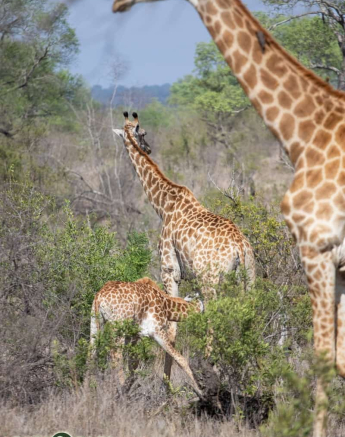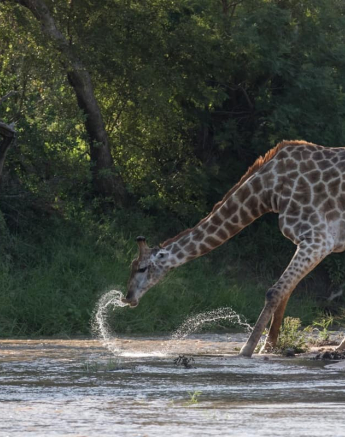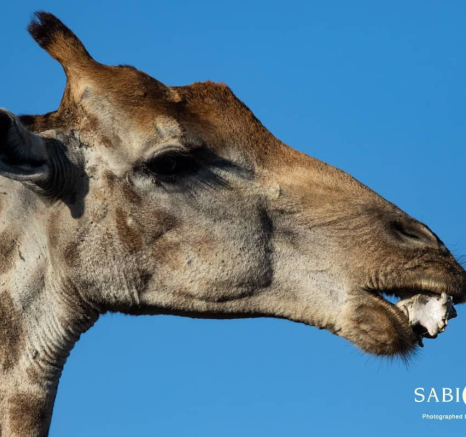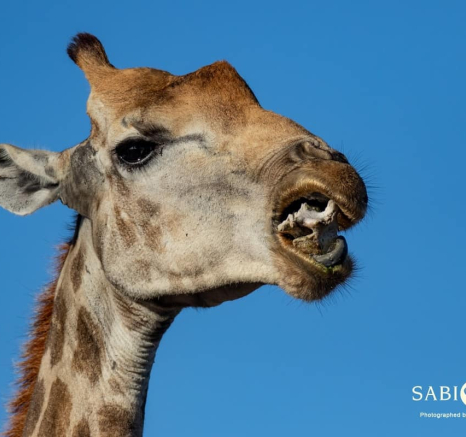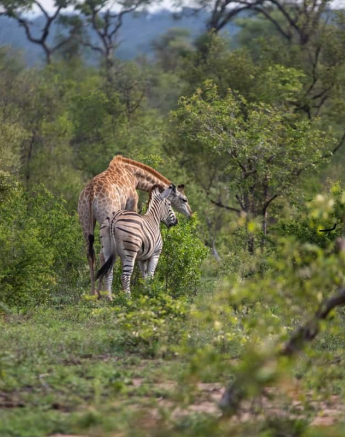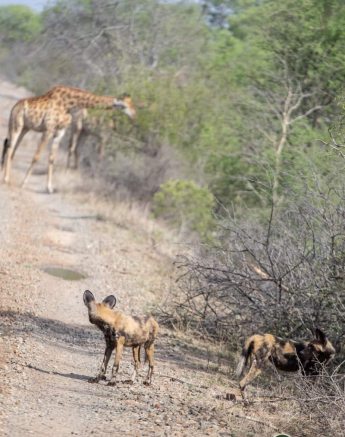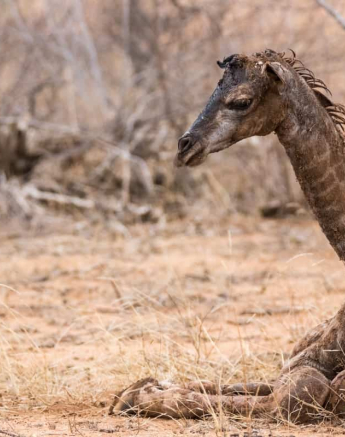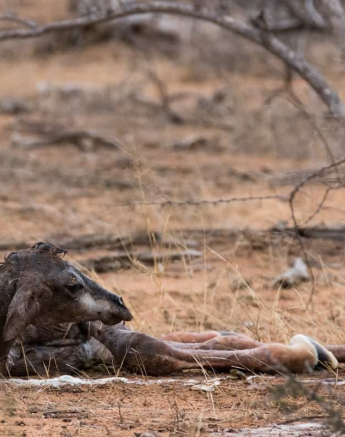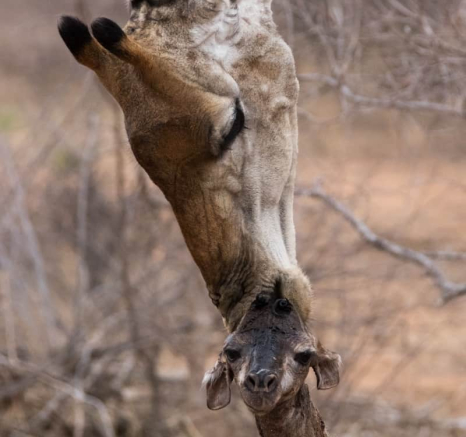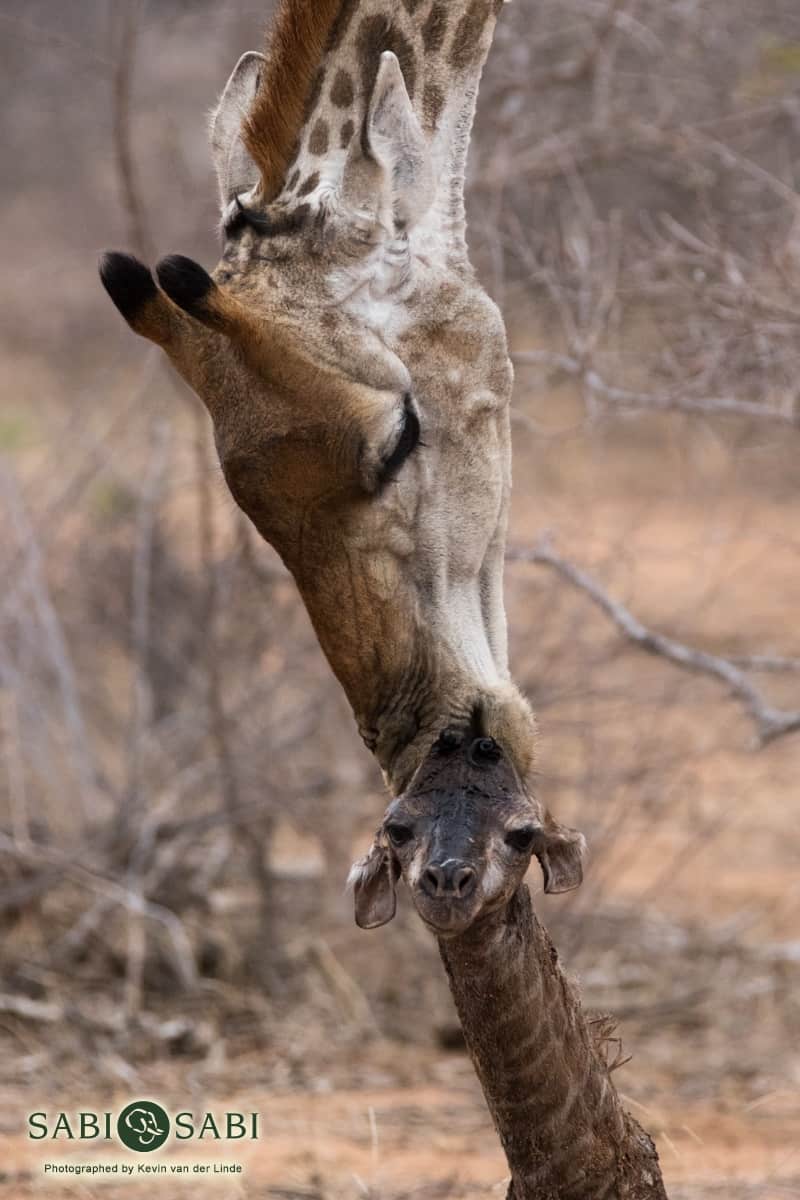Giraffe
on Jan 18, 2019Species name: Southern Giraffe
Scientific name: Giraffa camelopardalis giraffa
Weight: Male: 1300kgs - Female: 700kgs
Height: Male: 5.5m - Female: 4.5m
General habitat: Southern giraffes live in the savannahs and woodlands
Diet: Giraffe are browsers and favour leaves from the Vachellia and Senegalia trees, previously known as Acacia.
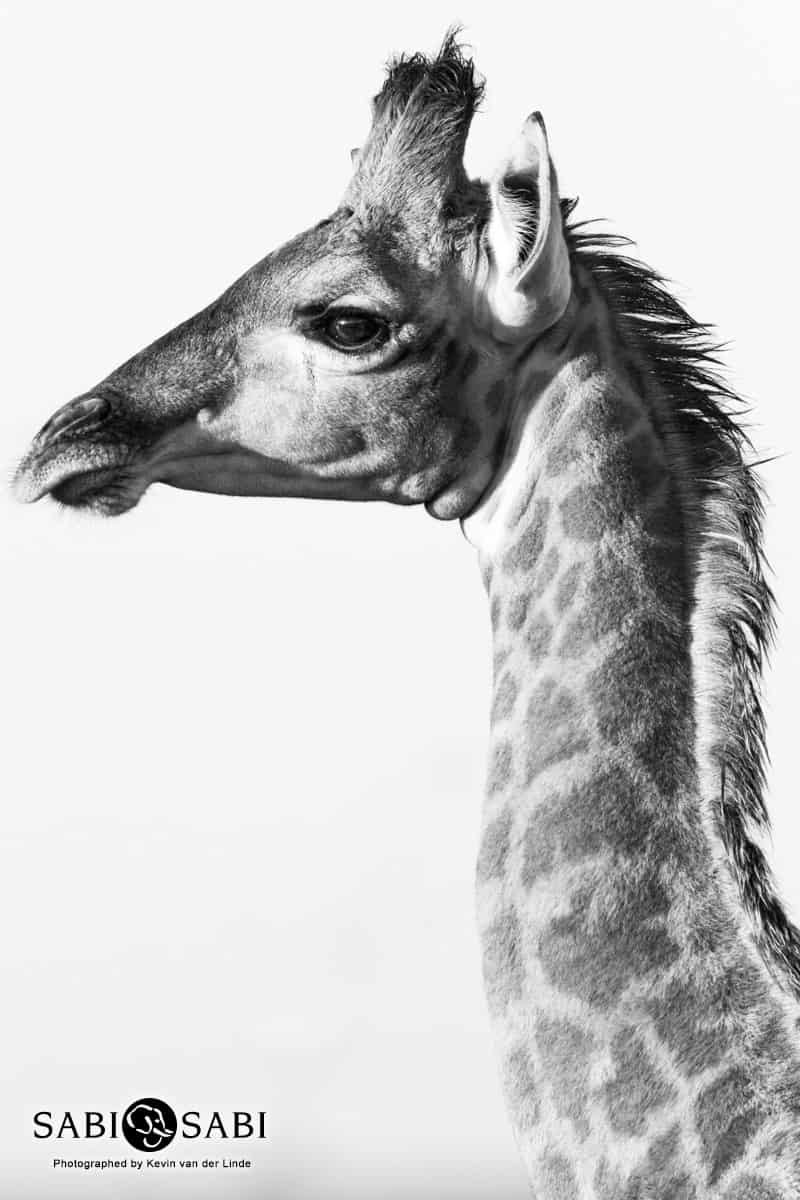
Giraffe are one of the most sought-after animals to view whilst out on safari here at Sabi Sabi. They are unique due to their towering physique and mesmerizing patterns. Often spotted from a distance, I get to see the excitement grow on the guests as we make our way to see them. Upon closer inspection, Southern Giraffes have dark patches, rounded and irregular in a reddish-brown colour. Unlike other species that have a faded colour in their legs, this giraffe keeps the spots all over the limbs, although they become smaller as they get closer to the feet. Their long necks, which enable them to reach the leaves high up on a tree, is surprisingly only made up of 7 neck vertebrae, the same as humans.
Giraffe do not need to drink water very regularly as their diet of Vachellia and Senegalia trees have a high moisture content in their leaves, but when they do go for a drink, it is both fascinating and awkward to watch. It is a long way down when you stand so tall and they must bend their front legs in order to reach the water, by doing so they could be in danger from predators but also from blood rushing to their head. To combat this, the giraffe has a complex pressure regulating system that prevents excessive blood flow to the brain which could kill it.
On their heads you will notice 2 “horn” like structures called osicones. A females’ osicones are rather small with a lot of hair covering them, where as a male has large thick osicones with very little hair on top. The lack of hair in males is because of the way they fight, a term known as “necking”. Giraffe have a very loose knit social structure with individuals often moving around and joining up with others and have no territories. When males fight, it is for breeding rights and the fighting can be very intense, sometimes lasting a few hours. They stand beside one another and start swinging their necks with the aim of hitting each other with their osicones, hence the term “necking”. Some battles will even draw blood, break bones and knock the other one unconscious with a right placed shot.
A strange thing to witness a giraffe doing is an activity called “osteophagia” or “the eating of bones”. They can’t always get all the nutrients they require from their staple food sources and even bones that have been lying in the bush for years, still contain a lot of nutrients, predominantly phosphorous and calcium, which remains a potential food resource.
Here at Sabi Sabi we are fortunate to have sightings of giraffe throughout the reserve, whether it be an extremely warm day or icy cold - they don’t have much place to hide from our trained trackers.
My Memorable Sighting
Recently on safari I came across an unusual sight, a young giraffe and a zebra feeding off the same bush. Prior to this we had been seeing this young giraffe and the zebra forming an unusual bond as they were often seen together, rubbing up against one another and sometimes we even witnessed allo-grooming. We are not too sure how this relationship was built as the young giraffe was still around its mother and still suckled from her so it couldn’t have been that it had lost its mother and was seeking companionship. What really struck me this time round was that the two were browsing from the same bush. Zebra are often known as grazers and predominantly feed on grass and in a few cases during a shortage of grass I have witnessed a zebra browsing. This time round though, there was no shortage in grass but still the zebra chose to browse and with none other than its giraffe friend. The beauty about nature is that there might not always be an answer for everything and some things may leave us puzzled for a very long time. It is going to be interesting to keep an eye on the relationship and whether it will last.
Photo Content
